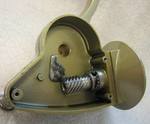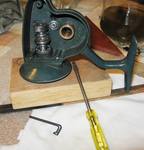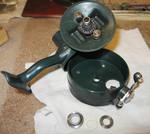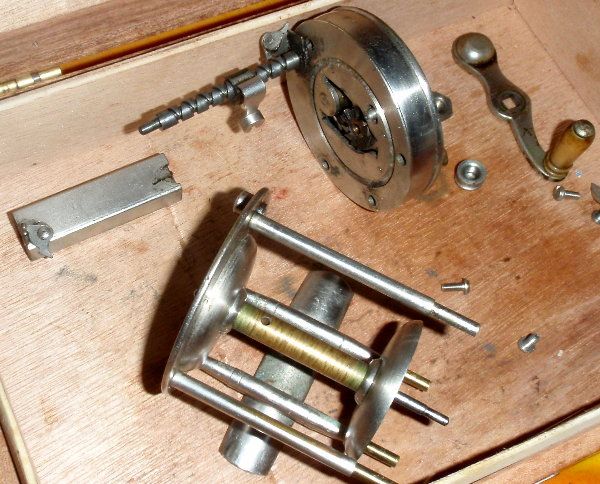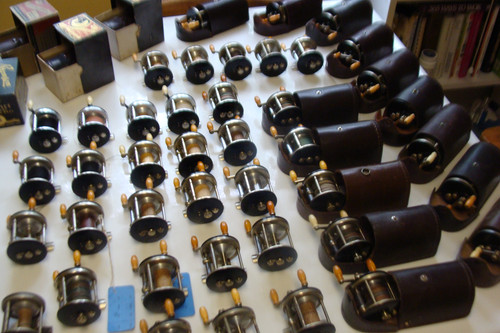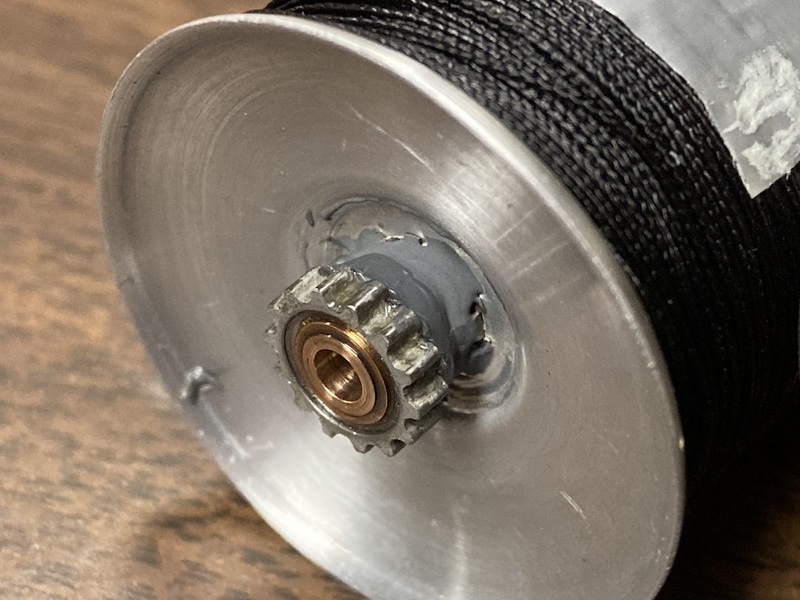Make darn sure that your work space, in particular, the floor beneath your workspace is “dropped-parts-friendly”. You will drop parts and they may be… impossibly tough to find. Physical laws of the universe —a number of them in fact— make certain that this will be so. I have come to lay a white, un-patterned, drop cloth beneath my workstation. I keep a 1000lux work light handy that can shoot light low across the floor to create shadows from even tiny objects.
When I drop something, I freeze, then carefully step away, so I don’t wreak further chaos in the cosmos, checking the soles of my shoes/slippers for a potential stowaway. Then to all fours to inspect…everything. Luckily, I’m a good “noticer” (credit to Patrick McManus for that fitting title) and have a lot of experience as a naturalist/hunter/tracker (think Tom Brown); I at least know when I’m in deep sht and how not to make it worse!
Case studies in humility:
#1: I dropped a Langley ‘gear box’ support screw and I heard the ‘tick’, ‘tick’, ‘tick’, and then the sickening metallic ‘clink!’ as it ended it’s trip in the baseboard heat radiator against the wall beneath my desk! I had to pop a section of baseboard moulding, dismantle the radiator, then resort to a mini shop-vac to suction the crevice. Sorting through the debris, I found it! Phew!
#2: I actually did… the unthinkable! I’m not sure whether I should feel stupid, or proud. I guess I got to feel both. Was refurbishing another SkilKast and I actually lost one of those minute ball bearings from the AB stack! They are about the size of a #12 shotgun pellet (think medium-sized sand grain)! Static electricity flung it onto the floor!
I instinctively froze —like when you’ve just arrowed an elk or deer and need to hear the direction and distance he’s gone— and heard that minute bearing, click onto the floor then roll behind me at about the 4-o’clock position. To make a harrowing story short, I thought, "A-Ha!", and grabbed a rare earth magnet and began combing the floor crevices. Unfortunately, I live in the Rocky Mountain foothills —prime mining country (Our mountains are like swiss cheese with mine shafts and vent holes). So, all the dust and sand that tracks into the house (we also live on dirt roads up here) is mostly iron-ore and therefore magnetic. So everything collects on the magnet! I took to sweeping the floor with a dampened hand into a tiny dust pile under that 1000lux beam and my 3X glasses and it eventually rolled right out into view! PHEW!
That little bearing is back where it belongs, and I have a second SkilKast ready to test drive.
SkilKast AB stack take-home lessons:
—Take reference photos of the stack order as you go so there is no way you can get them in the wrong order. Also, note that the cam —into which the tiny ball bearings go— has a proper orientation. The two SkilKasts I’ve dismantled have the upper side of this cam stamped with “UP”, which is darn thoughtful. The Pflueger people impress me more and more as I dismantle, and reassemble, their reels. But just in case we ever open one up that isn’t so stamped, or have one that the AB doesn’t work properly, it’s worth knowing that the cam has a proper orientation.
I’ll add some of my reference images to the SkilKast thread I started recently.
—Always work on a damp rag or paper towel to keep static in check. I live in a very arid climate so I keep hands moist too. Moist fingers have much better feel than dry, and esp cracked (and painful!), fingers do. A big help with tiny screws too.
—These minute SkilKast bearings are also magnetized, obviously how the Pflueger people, and I, manage them —in static-free environments. This makes the static issue —‘jumping bean’ bearings— a harrowing surprise. I use a pair of fine curved needle nose pliers with magnetized tips. They stick, but must be separated with a toothpick.
Phew! I hope this helps someone, sometime. Or at least entertains someone some late night when they can’t sleep or work on a reel.
Cheers,
Paul




